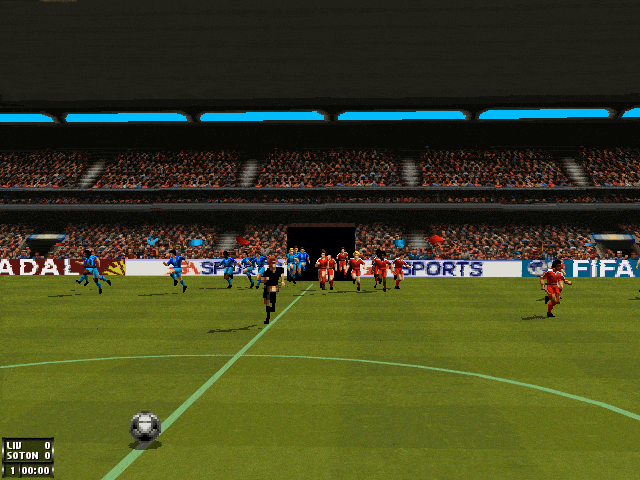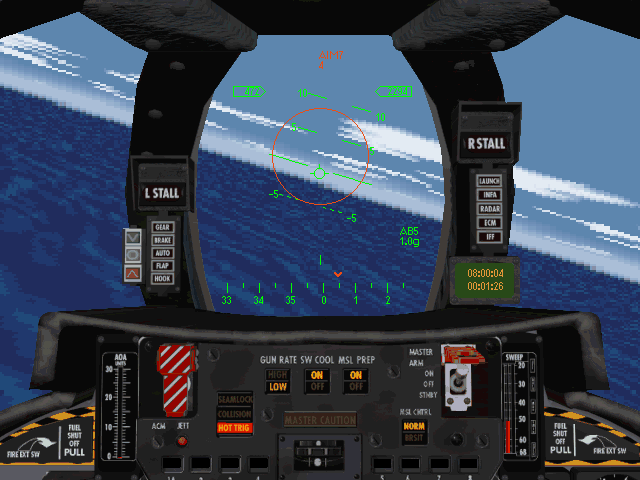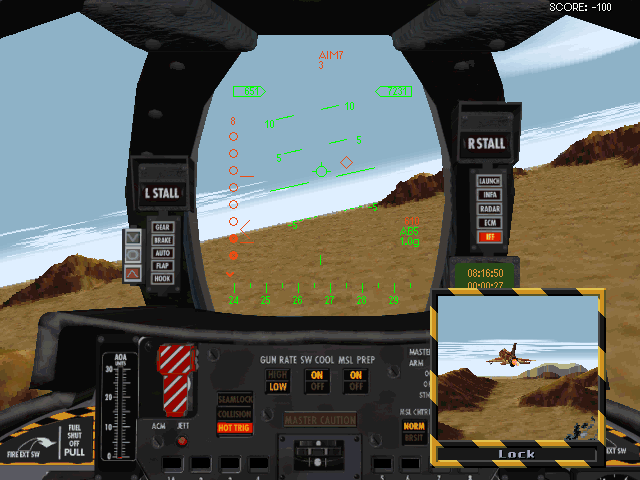digger wrote on 2023-01-17, 22:59:
I recall reading somewhere that the RTS game Supreme Commander consumed so much RAM, that it would sometimes crash on 32-bit Windows, and actually ran more stably on 64-bit Windows, even though it was a 32-bit game. The reason being that 32-bit Windows could only allocate up to 2GB RAM per application, whereas 64-bit Windows could allocate up to 4GB RAM per 32-bit application, the maximum amount of addressable memory in a 32-bit process.
Ah yes, Supreme Commander! How can we forget about it? For years, the game has always been a ubiquitous benchmark for CPUs beyond its generation, the same way Crysis for GPUs beyond its generation.
Ozzuneoj wrote on 2023-01-17, 23:45:
How about Grand Prix Legends? It was definitely not my kind of game but I remember it being extremely demanding at the time. All Papyrus racing games were that way for the year they were released, and it got especially bad when they added rollover physics, which I believe started with GPL and was added a few years later to the Nascar series with Nascar 4.
At which point the game become playable? GeForce 4? The best 3D accelerator in 1998 was Voodoo2 SLI IIRC.
For 1998 games, I would like to nominate Delta Force. It is Voxel, so no amount of 3D acceleration would help it. Fortunately, it runs flawlessly, out of the box, on Windows 7 64 bit. So despite it was quite demanding during its era, it has great 'forward compatibility', for lack of better terms.

Good thing it runs flawlessly on modern systems.
It was unlike, say, F-22 Lightning II or Armored Fist 2, that refuse to run on NT-based Windows sans emulation. Those games are not only demanding, but also have poor 'forward compatibility.' By the time we had hardware fast enough to run those, we still couldn't run those games, because the mainstream O/S has changed. I believe it is those games that drive us to build period overkill machines, like DOS-bootable Tualatin system. And unless you're building something really exotic like DOS-bootable Pentium 4, it is not really hard to do. But mainstream computer users may find it difficult, and then choose to give up those games instead.
I guess it is interesting to discern between most demanding games of their era and most demanding games of their era which are also plagued with poor forward compatibility.
Ozzuneoj wrote on 2023-01-17, 23:45:... Though technically SODA Off-road had rollover physics as well back in 1997. That was a pretty demanding game too, despite the really basic graphics. I remember the process of having the AI "learn" your custom tracks took forever and I wondered if CPUs would ever be fast enough to get that done in a reasonable amount of time. It's also neat that it was published by Sierra and made good use of the Rendition Verite 1000, which was the chip on Sierra's one and only graphics card. No 3dfx Glide or D3D for that title.
This is interesting. A racing game where the player can build their own circuits, but AI cars stumbled on those circuits due to poor AI? I definitely have to try it! 🤣
clueless1 wrote on 2023-01-18, 00:14:
I agree with leileilol about System Shock.
I thought it was Maximus who said that, and the game in question is Hi-Octane. Small potatoes, though.
clueless1 wrote on 2023-01-18, 00:14:Any game that runs fine in it's base version should not be considered, and SS ran okay in VGA.
It becomes grey area for certain games though. Dawn Patrol has 320x200 resolution, but the game was heavily advertised in 640x400 resolution. In fact, it is one of the games that were implicitly highlighted as 'the first SVGA games' in various computer game magazines. The same goes with US Navy Fighters, F-22 Lightning II, and Top Gun: Fire At Will. Those run fine in their base resolution of 320x200, but I doubt gamers bought them to play them in their base resolution.
clueless1 wrote on 2023-01-18, 00:14:I think of all the games leileilol listed, the #1 of them (IMO) is Strike Commander. It was highly anticipated, highly popular, and highly criticized for it's playability in the one and only resolution it ran in. It was responsible for a lot of system upgrades. But there are two other Origin games that I believe were worse. They weren't as popular, so that drops them down a bit in terms of exposure to the masses:
Pacific Strike and Cybermage. Pacific Strike only ran in VGA and it would be about 2 years before there was a system that could run it smoothly. It has a built-in framerate counter (SHIFT-F). Try it on your period correct hardware for yourself. IIRC, when I played it on my P200MMX, it struggled to maintain 30 fps consistently. There were graphical settings that needed downward adjustment until the Pentium II came out. As for Cybermage, it needed a P200 to run in VGA with a decent amount of framerate, and a 600Mhz PII to run in SVGA smoothly.
Indeed. Strike Commander runs very smooth on Pentium 100, and it surprised me that Pacific Strike was very slow despite running in the same, low res 320x200 resolution.
I'd like to add that, when running Pacific Strike in DOSBOX, it becomes quite hard to shoot down enemy fighters when CPU cycles are set too high. Thus, you need to find a balance between frame rate and playability. Here's my parameters, by the way.
cputype=486_slow
cycles=25000
What those parameters, frame rate is not entirely smooth, but shooting down enemy fighters is still manageable.
While we're at it, I'd like to say something about the first Wing Commander.
I played the game on a 12MHz 286 PC. And worse, I didn't have EMS that time (which ruled out many games including Savage Empire), so the Wing Commander didn't show me the animated stick-holding hand in the cockpit. However, despite playing the game with its minimum instead of recommended system requirements, I found the game to be quite playable.
- First, the game is slow instead of choppy. It is like playing in slow motion, but smooth slow motion nonetheless. For illustration, it is easier to play Wing Commander on a 286 than playing F-22 Lightning II on a Pentium 133, since the former is slow while the latter is choppy. I actually found it worked to my advantage, since it is quite easy to aim and shoot at Kilrathi fighters, despite I played with keyboard instead of joystick. Soon, I became the best ace in the game.
- Wing Commander is playable without joystick. This is unlike, say, Their Finest Hour (which actually came earlier), which is totally unplayable with keyboard.
- In-game music are also pretty good despite running on Adlib (FM Synthesizer) instead of MT-32. Perhaps because the music is orchestral instead of modern music. I often found that modern music like reggae and techno tend to sound anemic on FM synthesis. Thus, just like Ultima 6 and Martian Dreams, Wing Commander doesn't really demand a Roland MT-32 to sound good.



